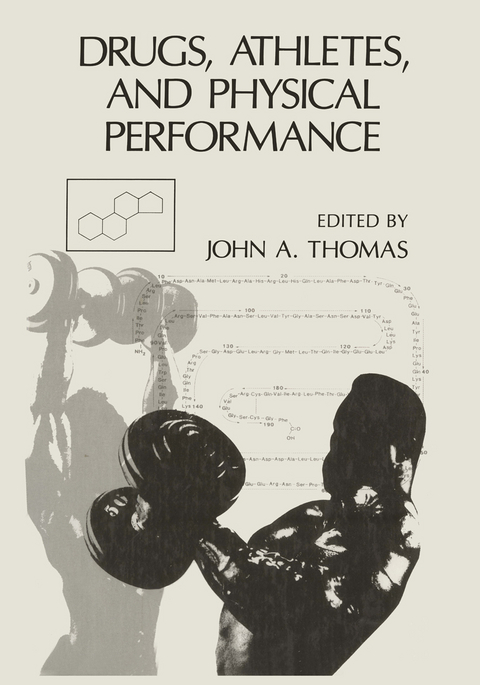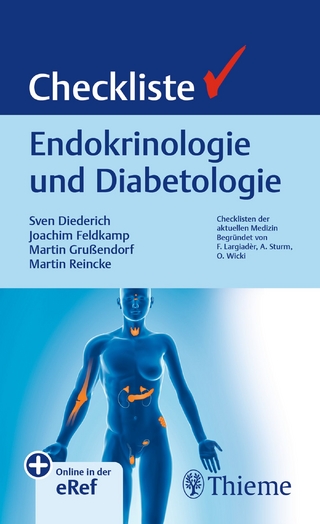
Drugs, Athletes, and Physical Performance
Springer-Verlag New York Inc.
9781468455014 (ISBN)
The use of performance-enhancing substances by athletes is not a contemporary epi demic. In fact, athletes purportedly resorted to such measures over 2000 years ago. Even at the ancient olympic games, athletes employed special diets and concoctions to enhance their performance. In ancient Rome and ancient Egypt, gladiators and athletes ingested various potions in order to improve their physical endurance. In most in stances, such early examples of substance abuse by athletes involved relatively in nocuous chemicals, and one might presume that any enhanced performance could be attributed largely to a placebo effect. Nowadays, aside from the ethical issues, these performance-enhancing substances are far more potent and hence toxic to the body. The many performance-enhancing chemicals, drugs, and hormones exert a variety of complex pharmacological actions, but all are meant in some fashion to improve phys ical ability. Their pharmacological effects ranges from imprOVed muscle strength, as in the case of anabolic steroids and growth hormone, to central nervous system stimula tion, as in the case of caffeine or amphetamine. Analgesics or other pain-killing drugs may also be used to suppress an existing injury in order that the athlete may compete.
1. Vitamins and Athletes.- 1. Physiological Function.- 2. Metabolism, Exercise, and Vitamins.- 3. Vitamin Supplementation and Enhanced Athletic Performance.- 4. Toxicity of Hypervitaminosis.- 5. Conclusion.- References.- 2. Fate of Anabolic Steroids in the Body.- 1. Introduction.- 2. Physiology of Androgenic Hormones.- 3. Synthetic Anabolic Steroids.- 4. Conclusions.- References.- 3. Nutrition, Fluid Balance, and Physical Performance.- 1. Introduction and History.- 2. Nutrition and Fluid Requirements during Physical Performance.- 3. Nutrition and Fluid Balance for Improved Physical Performance.- 4. Conclusion.- References.- 4. Analgesics and Sports Medicine Charles.- 1. Introduction and a Discussion of Pain.- 2. Analgesic Drugs.- References.- 5. Calcium.- 1. Dietary Calcium Requirements.- 2. Relationship of Exercise to Calcium Needs.- 3. Changes in Calcium Requirements Secondary to Other Dietary Components.- 4. Changes in Calcium Requirements Secondary to Drugs Used by Athletes.- 5. Changes in Calcium Requirements Secondary to Major Physiological Changes.- 6. Dietary Sources of Calcium.- 7. Calcium Supplements.- 8. Toxicity of Excess Calcium Intake.- References.- 6. Muscle Relaxants.- 1. Neuroregulation of Skeletal Muscle.- 2. General Mechanisms of Muscle Relaxants.- 3. Drugs Acting at the Neuromuscular Junction.- 4. Centrally Acting Skeletal Muscle Relaxants.- References.- 7. Anabolic and Androgenic Steroids.- 1. Physiology of the Androgens.- 2. Physiological Actions of the Androgens.- 3. Androgenic and Anabolic Steroid Drugs.- 4. Pharmacological Actions of the Androgens.- Suggested Readings.- 8. Anti-inflammatory Agents.- 1. The Inflammatory Response.- 2. Mediators of the Inflammatory Response.- 3. Pharmacology of Anti-inflammatory Drugs.- Suggested Readings.- 9. Effect of Exercise on Fuel Utilization and Insulin Requirements.- 1. Fuel Utilization.- 2. Substrate Turnover Rates.- 3. Hormonal Control of Fuel Regulation during Exercise.- 4. Adrenergic Control of Fuel Regulation During Exercise.- 5. Mechanisms of Hormonal and Adrenergic Control of Fuel Regulation.- 6. Other Fuel Regulatory Factors.- 7. Clinical Considerations.- References.- 10. Drug Abuse in Athletes.- 1. Introduction.- 2. Blood Doping.- 3. Bicarbonate Ingestion.- 4. Growth Hormone.- 5. Anabolic Steroids.- 6. Anti-inflammatory agents.- 7. Psychomotor Stimulants.- 8. Sympathomimetic Amines and Drugs Used to Treat Asthma.- 9. Recreational Drugs.- 10. Conclusions.- References.- 11. Exercise and Immunity.- 1. Introduction.- 2. The Immune System.- 3. Exercise Effects on the Immune System.- 4. Exercise-Induced Asthma.- 5. Conclusion.- References.- 12. Reproductive Consequences of Athletic Training in Women.- 1. Women and Exercise-Modern Trends.- 2. Background.- 3. Hormonal Modulation in Exercise.- 4. Exercise and Pregnancy.- References.- 13. Human Growth Hormone.- 1. Introduction.- 2. Regulation of Growth Hormone Secretion.- 3. Chemistry.- 4. Physiological and Metabolic Effects of Growth Hormone.- 5. Growth Hormone Receptor and Intracellular Changes.- 6. The Interaction of Growth Hormone and Somatomedins.- 7. Clinical Features of Abnormal Growth Hormone Production.- 8. Pathology of Growth Hormone Production.- 9. Assessment of Growth Hormone Production.- 10. Growth Hormone Therapy.- 11. Summary.- References.- 14. CNS Stimulants and Athletic Performance.- 1. Introduction.- 2. The Magnitude of Drug Effects on Athletic Performance.- 3. Effects of Caffeine on Endurance and Physical Performance.- 4. Effects of Amphetamines on Endurance and Physical Performance.- 5. Effects of Cocaine on Endurance and Physical Performance.- 6. Summary.- References.
| Zusatzinfo | 254 p. |
|---|---|
| Verlagsort | New York |
| Sprache | englisch |
| Maße | 178 x 254 mm |
| Themenwelt | Sachbuch/Ratgeber ► Natur / Technik ► Garten |
| Medizinische Fachgebiete ► Innere Medizin ► Diabetologie | |
| Medizinische Fachgebiete ► Innere Medizin ► Endokrinologie | |
| Medizin / Pharmazie ► Medizinische Fachgebiete ► Pharmakologie / Pharmakotherapie | |
| Studium ► 1. Studienabschnitt (Vorklinik) ► Biochemie / Molekularbiologie | |
| ISBN-13 | 9781468455014 / 9781468455014 |
| Zustand | Neuware |
| Informationen gemäß Produktsicherheitsverordnung (GPSR) | |
| Haben Sie eine Frage zum Produkt? |
aus dem Bereich


